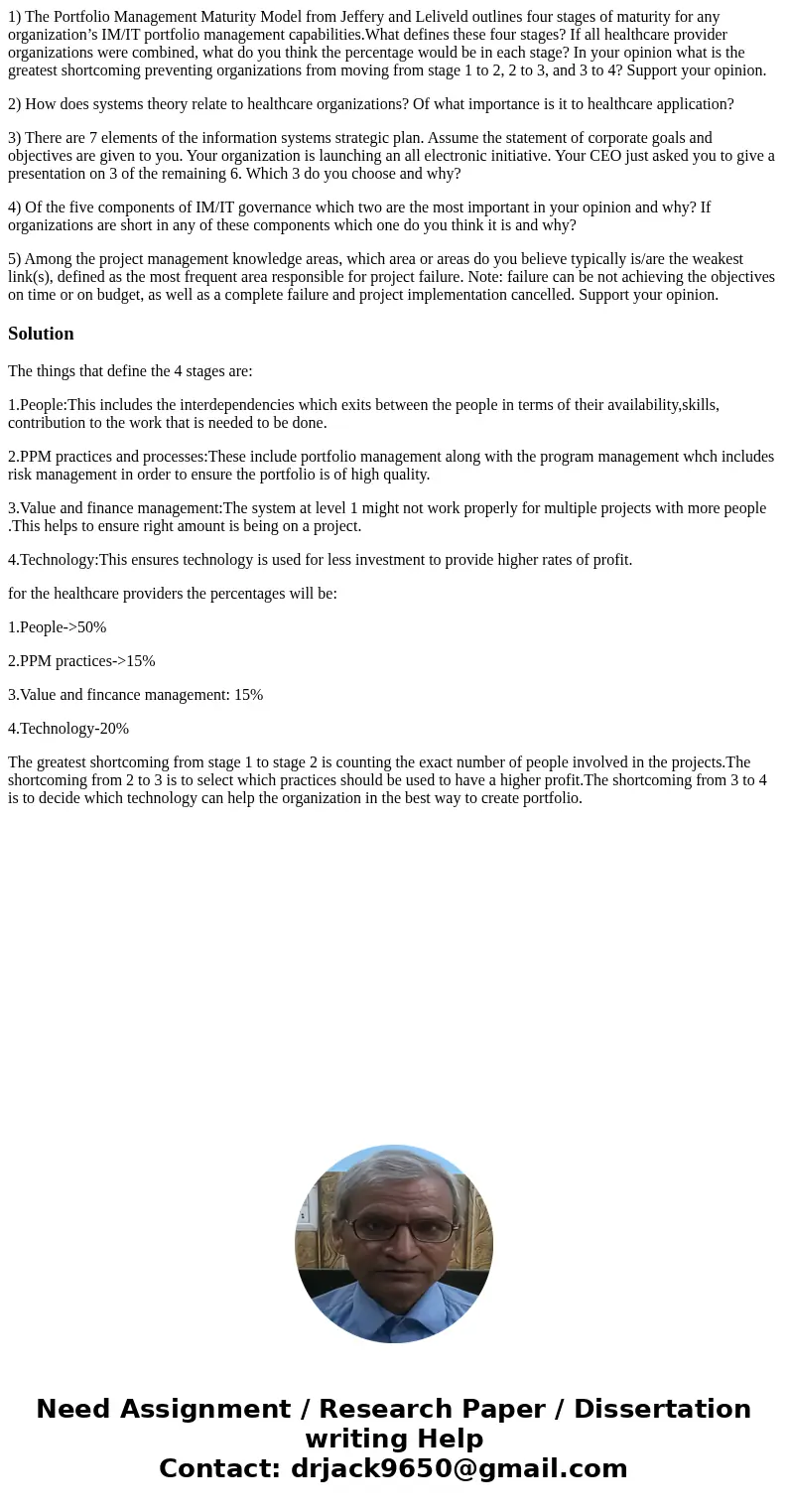1 The Portfolio Management Maturity Model from Jeffery and L
1) The Portfolio Management Maturity Model from Jeffery and Leliveld outlines four stages of maturity for any organization’s IM/IT portfolio management capabilities.What defines these four stages? If all healthcare provider organizations were combined, what do you think the percentage would be in each stage? In your opinion what is the greatest shortcoming preventing organizations from moving from stage 1 to 2, 2 to 3, and 3 to 4? Support your opinion.
2) How does systems theory relate to healthcare organizations? Of what importance is it to healthcare application?
3) There are 7 elements of the information systems strategic plan. Assume the statement of corporate goals and objectives are given to you. Your organization is launching an all electronic initiative. Your CEO just asked you to give a presentation on 3 of the remaining 6. Which 3 do you choose and why?
4) Of the five components of IM/IT governance which two are the most important in your opinion and why? If organizations are short in any of these components which one do you think it is and why?
5) Among the project management knowledge areas, which area or areas do you believe typically is/are the weakest link(s), defined as the most frequent area responsible for project failure. Note: failure can be not achieving the objectives on time or on budget, as well as a complete failure and project implementation cancelled. Support your opinion.
Solution
The things that define the 4 stages are:
1.People:This includes the interdependencies which exits between the people in terms of their availability,skills, contribution to the work that is needed to be done.
2.PPM practices and processes:These include portfolio management along with the program management whch includes risk management in order to ensure the portfolio is of high quality.
3.Value and finance management:The system at level 1 might not work properly for multiple projects with more people .This helps to ensure right amount is being on a project.
4.Technology:This ensures technology is used for less investment to provide higher rates of profit.
for the healthcare providers the percentages will be:
1.People->50%
2.PPM practices->15%
3.Value and fincance management: 15%
4.Technology-20%
The greatest shortcoming from stage 1 to stage 2 is counting the exact number of people involved in the projects.The shortcoming from 2 to 3 is to select which practices should be used to have a higher profit.The shortcoming from 3 to 4 is to decide which technology can help the organization in the best way to create portfolio.

 Homework Sourse
Homework Sourse